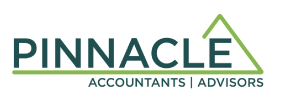EI For Self-Employed Individuals

Certain shareholders and proprietors fall outside the scope of insured individuals in the Federal EI Program. While this offers a cost savings for the avoided employee and employer premiums, it leaves those affected without coverage for sickness, maternity and parental leave, or other common claims. The EI special benefits program for self-employed persons is an alternative where EI benefits are deemed a necessity.
While the program does not offer the full sweep regular benefits offered by EI, there are six special benefits a self-employed person can claim:
- Maternity
- Parental
- Sickness
- Family caregiver for children
- Family caregiver for adults
- Compassionate care.
Enrollment is simple and can be done online on the My Service Canada platform. A claim for benefits may only be made once 12 months have passed from the date of enrollment.
Premiums are settled annually as part of the T1 Personal Tax Return and are calculated at 1.66% of self-employment earnings ($1.66 for every $100) up to a maximum of $1,049.12 for 2024. Self-employment earnings are proprietorship income and shareholder salaries for the purposes of determining the premiums due. The special benefits premium generally lines up with the standard EI program rate, which increases annually.
Benefits are limited to 55% of the previous years self-employment earnings and are capped at $34,760 for 2024. The benefit cap is based on the maximum annual insurable earnings for the given period. If a claimant receives self-employment income while receiving benefits, the compensation will be ground down in the same manner as with the standard EI program.
So, what’s the catch?
A registrant can opt out of the program at any point and be relieved of the liability for premiums. There is no course for refund of premiums paid up to that point. This option is not available to those who have made a claim under the program. Once benefits have been claimed under the special benefits program, registrants are required to pay EI premiums on all future self-employment earnings.
Before applying for benefits, registrants should work to understand the cost and benefits of the claim. Whether they stand to benefit from the program depends on the anticipated compensation and total premiums due on all subsequent self-employment earnings. A significant amount of forecasting is required to make an informed decision, so we recommend working with a tax professional to piece together a thorough cost-benefit analysis.
For more information about the program, it’s specific eligibility requirements, and what benefit amount you may be able to receive, visit the CRA website at: https://www.canada.ca/en/employment-social-development/programs/ei/ei-list/reports/self-employed-special-benefits.html#h2.01
Written by: Curtis Reeve, CPA
